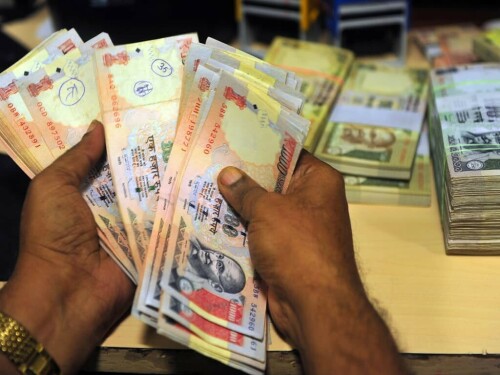Indian Rupee Forecasted to Strengthen Amid Inflows and Dollar Weakness
MUMBAI: The Indian rupee is anticipated to exhibit a positive trend this week, supported by increased portfolio investments and a softening U.S. dollar. Government bonds are expected to respond to insights from the central bank’s recently released policy meeting minutes.
The rupee’s previous close was at 85.3675 on Thursday, marking a weekly increase of almost 0.8%. Indian financial markets were closed on Good Friday.
A recent poll indicates growing optimism surrounding the rupee, as the dollar faces downward pressure due to concerns over U.S. tariffs.
Currency traders have noted that amplified foreign purchases of Indian equities have further bolstered the rupee’s value.
Exchange data reveals that foreign investors made net purchases of over $1.5 billion in Indian stocks during the past week.
Potential de-escalation in trade tensions between the U.S. and China could provide additional support to Asian currencies in the short term.
Anil Bhansali, Head of Treasury at Finrex Treasury Advisors, suggests a near-term trading range of 85 to 85.80 for the dollar-rupee pair, advising to sell on any upward movements.
With a relatively sparse data calendar in the U.S. this week, investors will closely monitor statements from Federal Reserve officials and indications of progress in trade negotiations between individual countries and the White House.
Bond Yields React to Monetary Policy
The benchmark 10-year bond yield concluded at 6.3709% on Thursday, reaching its lowest point since December 2021, representing a weekly decline of 7 basis points.
The 10-year bond yield has experienced a decrease for five successive weeks, accumulating a total reduction of 33 bps.
Market analysts foresee the yield fluctuating between 6.30% and 6.40%, influenced significantly by the central bank’s debt acquisition activities and the insights derived from the monetary policy meeting minutes.
Earlier this month, the RBI reduced its key policy rate by 25 basis points for the second time, concurrently shifting its stance to “accommodative”.
The central bank’s governor also indicated the RBI’s intent to maintain surplus liquidity at approximately 1% of deposits within the banking system.
Economists anticipate further interest rate reductions by the central bank, exceeding previous expectations, as decelerating growth and reduced inflation provide leeway for action. Retail inflation in March reached its lowest level since August 2019.
ICICI Securities Primary Dealership suggests that recent data, combined with predictions of above-normal monsoons, make back-to-back rate cuts at the June and August policy meetings more probable.
They added, “Moreover, the risk is clearly that soft inflation (averaging between 3.5 to 4%) creates scope for additional easing beyond the August meeting.”



Comments (0)
No comments yet. Be the first to comment!
Leave a Comment